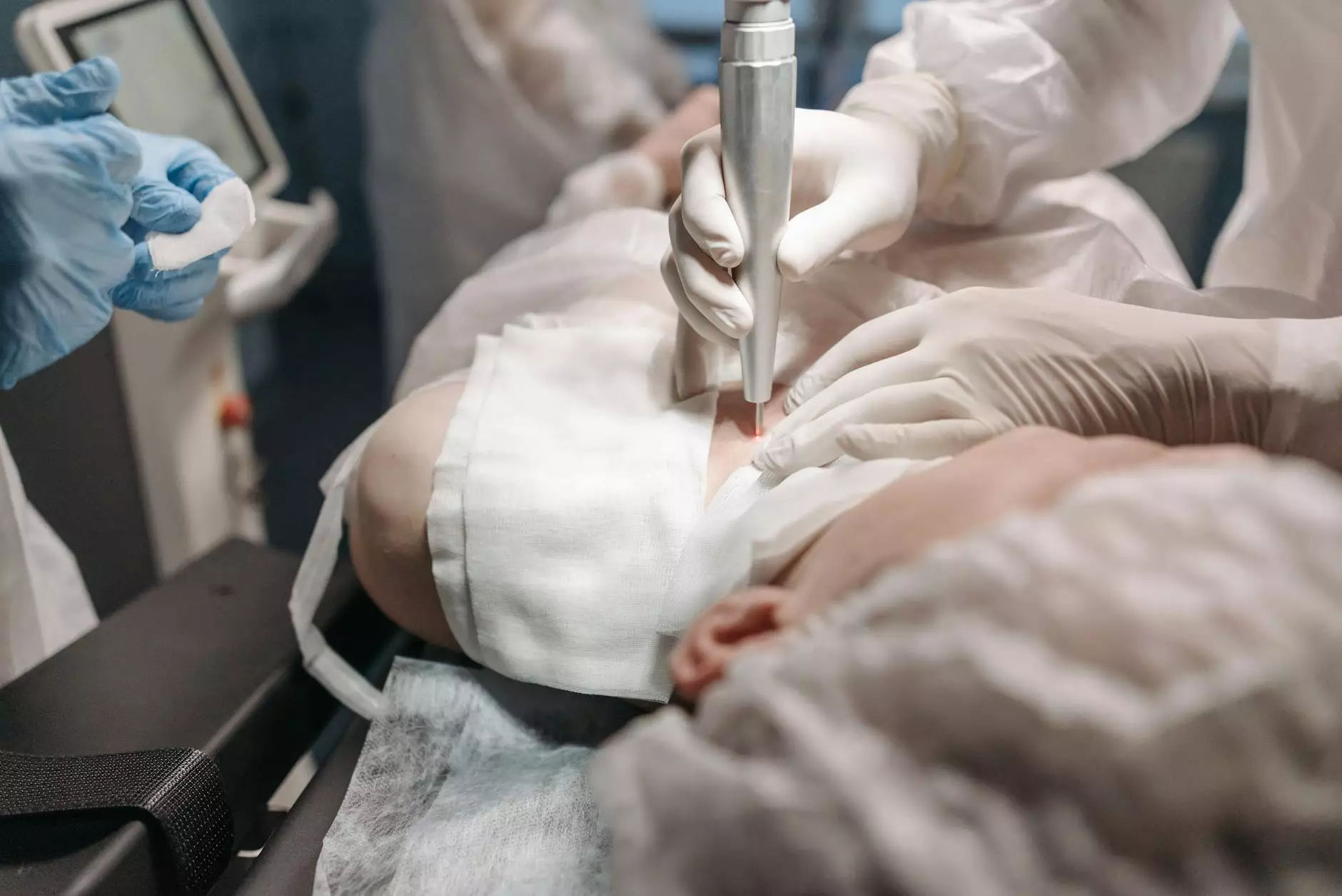Understanding Unilateral Salpingo Oophorectomy Surgery

The world of medicine is ever-evolving, especially when it comes to specialized surgeries. Among these, unilateral salpingo oophorectomy surgery stands out as a crucial procedure in the field of gynecology. This article delves into the intricate details surrounding this surgery, providing patients and their families with comprehensive insights into its benefits, process, and recovery.
What is Unilateral Salpingo Oophorectomy?
Unilateral salpingo oophorectomy (USO) refers to the surgical removal of one ovary and the corresponding fallopian tube. It is typically performed as a treatment for various gynecological conditions, including:
- Ovarian Cysts: Fluid-filled sacs that can develop on either ovary, sometimes requiring removal when they cause pain or other complications.
- Endometriosis: A painful condition where tissue similar to the lining of the uterus grows outside of it, potentially affecting one ovary.
- Ovarian Tumors: Both benign and malignant tumors may necessitate the removal of the affected ovary and fallopian tube.
- Pelvic Inflammatory Disease (PID): An infection that can damage reproductive organs, leading to the consideration of surgical removal.
Why is Unilateral Salpingo Oophorectomy Surgery Performed?
Understanding the rationale behind unilateral salpingo oophorectomy surgery is vital for prospective patients. Here are some of the primary reasons why this surgery is considered:
- Prevention of Cancer Spread: In cases of ovarian cancer, removing one ovary and fallopian tube can prevent the spread of cancer to other parts of the body.
- Pain Relief: Conditions like endometriosis can lead to chronic pain. Removal of the affected ovary can dramatically alleviate discomfort.
- Hormonal Regulation: While the removal of one ovary can affect hormone levels, it often allows for better hormonal stability than if multiple organs were involved.
- Improved Quality of Life: For many patients, resolving the issues surrounding their reproductive health leads to a significant improvement in their overall well-being.
The Procedure: What to Expect
Preparing for unilateral salpingo oophorectomy surgery involves several steps. Understanding each phase can help patients feel more at ease:
1. Pre-Operative Assessment
Before the surgery, patients will undergo a thorough assessment, which typically includes:
- Medical History Review: Discussing past medical issues and any family history of gynecological problems.
- Imaging Tests: Ultrasounds or CT scans may be conducted to visualize the ovaries and surrounding structures.
- Blood Tests: Checking overall health and determining the best anesthesia options.
2. Anesthesia
On the day of the surgery, patients will receive anesthesia. This can be:
- General Anesthesia: Patients are completely unconscious during the procedure.
- Local Anesthesia: The surgical area is numbed, allowing patients to remain awake, though this is less common for this type of surgery.
3. Surgical Procedure
The actual surgery can be performed via two primary methods:
- Laparoscopic Surgery: This minimally invasive approach involves small incisions. A camera is inserted to provide real-time visuals, allowing the surgeon to carefully remove the ovary and fallopian tube.
- Open Surgery: In cases where more extensive work is needed or complications arise, a larger incision may be made in the abdomen.
Post-Operative Recovery
Recovery after unilateral salpingo oophorectomy surgery varies from person to person, but some general points to consider include:
1. Immediate Recovery
Right after the surgery, patients are typically monitored in a recovery room. Here, medical professionals will check vital signs and manage any immediate post-operative discomfort.
2. Hospital Stay
Most patients can expect to stay in the hospital for a short time, usually 1 to 2 days, especially after laparoscopic procedures. Open surgery may require a longer stay.
3. Home Recovery
Recovery at home involves:
- Rest: Adequate rest is crucial for a healthy recovery.
- Pain Management: Patients are often prescribed pain relief medications to help manage discomfort.
- Follow-Up Appointments: Regular check-ins with the healthcare provider to monitor the healing process.
- Gradual Return to Regular Activities: Participants should refrain from strenuous activities for at least 4-6 weeks.
Potential Risks and Complications
Like any surgery, unilateral salpingo oophorectomy comes with potential risks. Understanding these can help patients make informed choices:
- Infection: As with any surgical procedure, there is a risk of infection at the incision site.
- Bleeding: Excessive bleeding during or after the surgery can occur in rare instances.
- Hormonal Imbalance: Since hormones are tied to ovarian function, patients may experience changes after surgery.
- Emotional Responses: Some may have emotional reactions post-surgery, which is normal and often manageable with support.
Lifestyle Changes and Considerations Post-Surgery
After a unilateral salpingo oophorectomy, patients are encouraged to embrace some lifestyle changes that can promote recovery and overall health:
1. Nutritional Adjustments
Maintaining a balanced diet rich in vitamins and minerals is essential. Foods that can support healing include:
- Protein-Rich Foods: These aid in tissue repair (e.g., beans, fish, poultry).
- Fruits and Vegetables: A variety of colors can supply important antioxidants.
- Whole Grains: These help maintain energy levels and promote digestive health.
2. Regular Exercise
While strenuous activities must be avoided initially, gentle movements, such as walking, can improve circulation and aid recovery. Patients should consult their healthcare provider for personalized exercise recommendations.
3. Emotional Health
The psychological aspects of surgery are often overlooked. Patients might benefit from:
- Counseling Services: Professional support can help navigate emotions.
- Support Groups: Connecting with others who have undergone similar experiences can foster understanding and encouragement.
Consulting with a Specialist
If you are considering unilateral salpingo oophorectomy surgery, it is crucial to consult a qualified specialist. Dr. Seckin, a leader in gynecological health, offers comprehensive consultations to discuss your condition and treatment options tailored to your needs.
Final Thoughts: The Importance of Empowerment through Knowledge
Unilateral salpingo oophorectomy surgery can be a life-changing procedure for those facing gynecological challenges. Through thorough understanding and preparation, patients can navigate this journey with confidence. With advances in medical technology and exceptional care from professionals like those at drseckin.com, the path to recovery and improved quality of life is well within reach.
Always remember, informed decisions lead to empowered patients. Consider discussing your options with a healthcare provider today.









